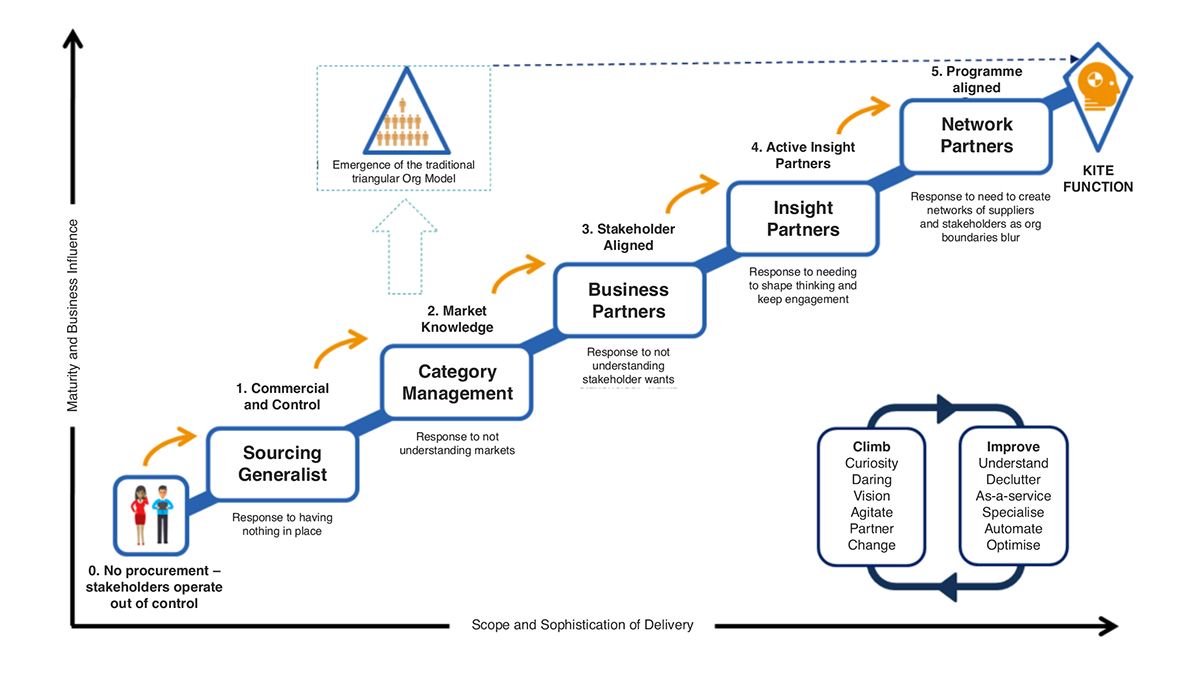Commercial teams in the public sector are improving their capability and influence, but do we risk being blinded by undeliverable promises? Proxima tell us more here about the future of procurement
As Mahatma Gandhi said: “The future depends on what you do today,” – achieving the kind of future we want to see will depend on the plans and actions we put in place today.
At Proxima, we’ve been trying to envision what the future of procurement could look like and how commercial teams can influence their organisations to drive even more value out of their supply chains.
Of course, technological advances will be a part of this; driving efficiency, speeding up decision-making, improving data availability and quality, but other factors and drivers are also coming to the fore in the current climate: social and sustainability objectives, welfare and wellbeing issues, all contributing to an overall desire for “innovation” and “creativity” to meet these needs.
The value equation is, therefore, no longer a simple a cost versus quality comparison but has become increasingly complex as the number of variables multiplies.
Embracing the digital trend
If we don’t embrace digital in procurement and commercial, it will embrace us anyway. You can’t live a day in the world of procurement without hearing from those anxious to “go digital”, to adopt the latest AI, “to automate”, to find the edgiest algorithm machine learning etc. etc. But practically-speaking, how applicable is this to solving procurement’s issues…?
Our advice to our clients is: don’t start by thinking about technology! Think about why you need technology and what benefits it will bring to the way you operate.
Modern procurement professionals are not just trying to go digital; they should be trying to change the value proposition of a future-ready Procurement function. The function of the future is a tech-enabled, high-capability business partner, capable of bringing real market insight to the stakeholders whenever they need it (insight partners), and capable of building networks of suppliers and stakeholders to launch the latest innovative products and services (network partners).
The evolution of the commercial function as we see it is shown in the diagram overleaf:
This is really important – technology is going to help enhance and free up from the transactional, through the analytical and eventually to the spot-buy and much of sourcing itself, as well as providing insights further down the supply chain to manage risk. In other words, digital procurement technology is going to shrink the base of the procurement organisation pyramid.
Is the public sector being left behind?
It’s very tempting to see public sector procurement as being stifled by bureaucracy and regulation, unable to access the best suppliers and most innovative solutions or practices. Yet that would ignore the great strides taken in recent years to improve the competence, working practices and collaborative working that have been driven by individual departments, the Government Commercial Function, Crown Commercial Service and other cross-functional organisations. It would also underestimate significantly the complexity of the landscape.
Asking colleagues about their experience of working with our clients, we highlighted many ways in which the public sector is actually ahead of the game in best practice management of sourcing and supplier management as well as having the skills to deliver this, such as:
“The processes force more discipline in setting out requirements and how we’re going to evaluate them.”
“Suppliers don’t get complacent due to fixed-term contracts.”
“The definition of ‘value’ can be much broader than simply cost – issues such as social value, sustainability and the use of SMEs make for richer decision-making.”
“Suppliers are treated more fairly and in a less cavalier fashion than in much of the private sector.”

Yet at the same time, we also see that “some buyers are scared of conversations with the market,” “the fear of challenge leads people to default to certain tried and tested procedures,” and as a result “buyers’ ability to be proactive and develop the market is constrained.”
So what’s stopping you?
Within the public sector there are some inherent obstacles in the path of a radical change of direction:
1. Investment in technology is frequently constrained by budgets that demand short-term cost reductions from any investment – too often procurement-related investments have historically under-delivered against their business case and other political priorities will often hold sway over “back office” investments.
2. Regulations – the perception that public contracts regulations (PCR 2015) hinder the effective use of supply markets is strongly-held in many organisations. Supplier days, innovation forums and an increasing use of negotiated procedures and even innovation partnerships are all examples of public sector teams embracing the need to work with suppliers.
3. Government policies – there’s a lot for the modern-day commercial professional to do alongside ‘traditional’ procurement activities: many new policies and drivers are coming to the fore, such as social value, where suppliers need to show how they can help improve society by tackling issues such as modern slavery and climate change, and; prompt payment, especially to SMEs, to increase resilience in the supply chain.
4. Cultural – resistance to change and the reliance on “how we’ve always done things” is probably the one way in which public sector buyers and stakeholders may fail to grasp the opportunities the future could bring; and in this, it is no different to the private sector.
So, take inspiration from the many good news stories from across Government Commercial, and in particular use the Government Commercial Function’s role in sharing best practices and building coordinated strategies and approaches. In order to drive tangible behaviour change, departments now need to consider how to practically adopt these best practices into everyday ways of working, and track their own journey to meet the higher commercial standards which are now expected and achievable in this new era of Government Commercial.
*Please note: This is a commercial profile











